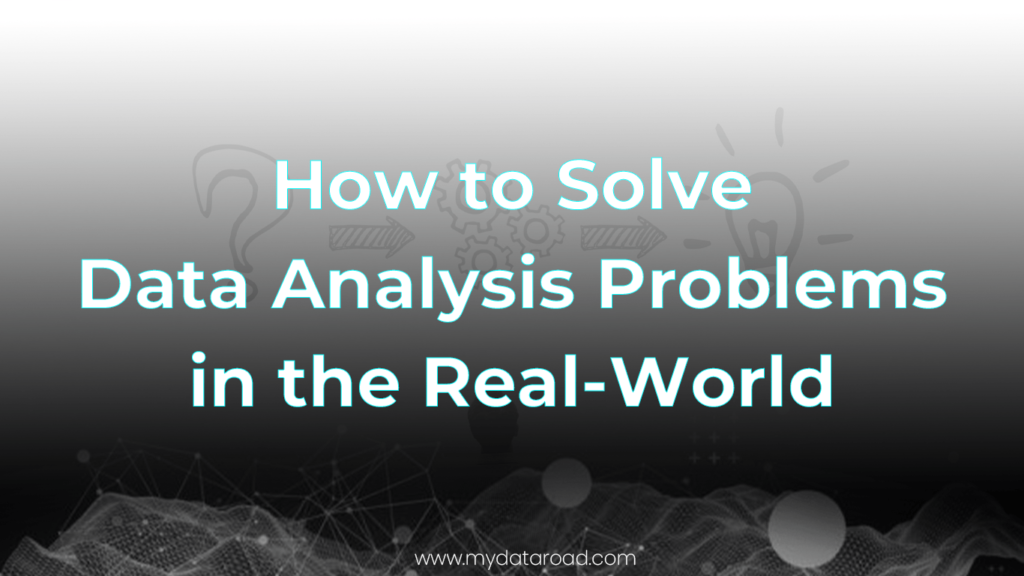The Importance of a Data Analysis Portfolio for Job Seekers
In today’s competitive job market, having a well-crafted data analyst portfolio is essential for job seekers in the field of data analysis. A data analyst portfolio demonstrates the practical application of one’s technical skills, showcasing real-world experience and validating their expertise to recruiters, hiring managers, and potential clients in a way that is difficult to achieve through a resume alone
A strong data analyst portfolio not only highlights an individual’s ability to analyze and interpret data but also emphasizes how their unique insights and analysis can help companies solve problems and capitalize on new opportunities. By presenting a visually engaging and diverse collection of projects, job seekers can effectively showcase their skills while proving their value to potential employers, ultimately improving their chances of landing a desired position in the field.
Having a data analyst portfolio is crucial, as employers need to verify that candidates possess the required technical skills and experience for the role. By including various projects that highlight different aspects of one’s skill set, the portfolio allows job seekers to stand out among the competition and provide the best possible impression to employers seeking expert data analysts.
What is a data analysis portfolio?
A data analysis portfolio is a comprehensive collection of a job seeker’s past work, skills, and achievements in the field of data analysis. It serves as a practical demonstration of one’s data analytics capabilities, showcasing real-world examples of their expertise and problem-solving abilities.
The portfolio typically includes a variety of materials, such as personal technical projects, research papers, presentations, and other work related to data analytics and data science. This not only highlights a candidate’s technical proficiencies but also emphasizes their ability to communicate complex data concepts effectively.
Related Article: The Complete Roadmap to Become a Professional Data Scientist.
A well-organized and visually appealing data analysis portfolio can be a valuable asset for job seekers in the competitive data analytics job market. It allows potential employers to assess the candidate’s competence and experience in a tangible way, beyond the confines of a traditional résumé.
In addition to its usefulness for full-time job applications, a data analysis portfolio is also beneficial for freelance professionals. By providing a showcase of their skills and capabilities, freelancers can impress potential clients and land lucrative projects.
Ultimately, a data analysis portfolio is an essential tool for job seekers in this field, actively demonstrating their ability to utilize data-driven insights to help businesses overcome challenges and seize new opportunities.
The Importance of a Data Analysis Portfolio
Stand Out in the Job Market
In the competitive field of data analytics, having a data analyst portfolio is essential for job seekers to stand out from the crowd. A well-crafted portfolio demonstrates a candidate’s skills and experiences more effectively than a resume alone. It presents potential employers with tangible evidence of the candidate’s ability to work with data and contribute value to their organization.
A strong data analyst portfolio can also:
- Set you apart from other candidates during the hiring process
- Increase your chances of being called for an interview
- Help you build a professional online presence, such as on LinkedIn
Showcase Your Skills and Experience
A data analyst portfolio allows job seekers to showcase their skills and experience in a comprehensive and visually appealing manner. Including various projects and examples in the portfolio helps to display a range of technical abilities and proficiencies, such as:
- Data cleaning
- Data manipulation
- Visualization
- Statistical analysis
- Machine learning
Related Article: How to Create Data Visualization using Python (Plotly)
Moreover, a data analyst’s portfolio serves as a platform to validate your skills for recruiters, hiring managers, and potential clients. By presenting case studies, project descriptions, and results, the portfolio makes it easier for potential employers to assess the candidate’s experience and potential fit for their organization.
In summary, creating a data analysis portfolio is crucial for job seekers in the field. It allows them to stand out in the job market, showcase their skills and experience, and ultimately increase their chances of finding a suitable job opportunity.
Choosing the Right Platform and Format
Website Builders and Platforms
For data analysts seeking to display their portfolio, a visually appealing and easy-to-navigate website can make a significant difference. Website builders like WordPress and Wix offer user-friendly interfaces and customizable templates, allowing you to create a personalized blog or website to showcase your work. With these tools, you can present data visualizations, case studies, and other relevant projects in an organized manner. It is important to choose a platform that supports embedding various file types, such as Tableau dashboards or HTML elements, to ensure proper display of your portfolio components.
Coding Platforms and Notebooks
In addition to website builders, there are coding platforms and notebook solutions designed specifically for data analysts and scientists. For instance, GitHub serves as a popular choice for hosting code and data projects. GitHub repositories can host Jupyter Notebooks, R Notebooks, and other code files. These platforms not only exhibit your analytical skills in Python, SQL, and other programming languages but also demonstrate your ability to collaborate with other developers and contribute to open-source projects.
Jupyter Notebooks and R Notebooks are particularly useful formats for data analysts as they allow you to combine code, visualizations, and narrative in a single, shareable document. By presenting your work in this format, potential employers can easily assess your skills in various programming languages and data analysis techniques.
In summary, choosing the right platform and format for your data analysis portfolio depends on your skillset and the type of work you want to showcase. Prioritize user-friendly website builders for a visually appealing presentation, and consider coding platforms and notebook solutions to demonstrate your technical expertise.
Key Components of an Effective Portfolio
Showcasing Your Best Work
An effective data analyst portfolio should highlight the best examples of a job seeker’s work. This may include projects they’ve done in SQL, Python, R, or Tableau. It’s important to showcase a variety of skills to demonstrate their proficiency in data analysis, machine learning, and data visualization. They may also want to feature work from their Kaggle competitions or freelance data analyst gigs, illustrating their ability to tackle real-world problems.
Related Article: How to Solve Real-World Data Analysis Problems
Clean and Organized Layout
The layout of the portfolio should be clean and organized, making it easy for potential employers to navigate and find relevant information. The homepage could display a brief overview of the individual’s work experience, skills, and testimonials from previous clients or colleagues.
- Use clear headings and subheadings
- Incorporate bullet points or tables to present data
- Categorize projects by skill or domain (e.g., data analysis, data visualization, machine learning)
Visual and Communication Aspects
One critical aspect of a good data analytics portfolio is demonstrating strong visual and communication skills. Including well-designed charts and graphs in the projects will show off their expertise in data visualization tools like Tableau Public or Excel. In addition, it’s essential to showcase their ability to explain complex ideas in a clear and concise manner, through blogs or project descriptions.
- Include high-quality images or screenshots of visualization examples
- Offer concise explanations of the methodology and results
- Make use of analytics tools like Twitter, WordPress, or other social media platforms to share insights
Including Personal and Contact Information
A successful portfolio should also include personal and contact information, such as a brief bio, interests, and links to professional social media accounts (e.g., LinkedIn, Twitter).
This allows potential employers to learn more about the individual and can help job seekers demonstrate their unique personality and network within the industry.
- Create a dedicated “About Me” or “Contact” section
- Link to relevant social media accounts and professional profiles
- Share interests or hobbies related to data analysis or the industry they’re targeting
Tips for Creating an Impactful Data Analysis Portfolio
Showcase a Variety of Skills
When building a data analysis portfolio, it’s important to demonstrate a wide range of skills that are relevant to the job. These include technical skills such as proficiency in Python, SQL, Tableau, and machine learning algorithms. Additionally, showcase your knowledge of statistics and your ability to clean data, create visually appealing graphs, and design easy-to-navigate dashboards.
Incorporate Examples and Case Studies
To provide a deeper understanding of your expertise, include examples of your work and case studies in your portfolio. This shows how you can apply your knowledge to solve complex problems and highlights your ability to communicate results effectively. Use concise language, concise headings, and best practices in storytelling to convey the impact of your work clearly. A good example of this is the work of Naledi Hollbruegge who provided detailed case studies to illustrate their skills and achievements.
Collaborate with Others and Gather Feedback
Data analysts often work as part of a team, so including projects where you collaborated with others, such as data scientists, designers, or other professionals, can demonstrate your ability to work well in a team setting. Be sure to gather feedback from your teammates and hiring managers to refine your portfolio, making it more effective at showcasing your skills.
Ensure to highlight the specific role you played in these collaborative projects, detailing how you contributed to the overall success of the initiative. This helps establish trust and showcases your personal brand as an expert in the field.
Technical Skills and Presentation
Presenting your technical skills in a visually appealing manner is crucial to set yourself apart from other applicants. Use tools like Power BI and Tableau to create interactive, engaging visuals that demonstrate your expertise in data analysis tools. Incorporate well-organized headings, and an elevator pitch that briefly explains your background, and ensure your contact details are easy to find.
Remember, an impactful data analysis portfolio is more than just a showcase of your skills – it is a reflection of your personal brand and a testament to your ability to solve problems for potential employers. By following these tips, you can create a portfolio that stands out and increases your chances of landing that dream data analyst job.
Examples of Effective Data Analysis Portfolios
One example of an effective data analysis portfolio is Harrison’s data analytics portfolio. His portfolio not only highlights his technical skills and projects, but also showcases his personal brand through the use of fun graphics, choice words, and a peek at his interests. This approach helps to make the portfolio more engaging and memorable for potential employers.
Another impressive data analyst portfolio is that of Claudia Ten Hoope, a successful data scientist and freelance data analyst based in the Netherlands. Her portfolio demonstrates her expertise in a variety of tools and techniques, such as R programming, Python, and Tableau. She also includes case studies and testimonials from clients, adding credibility to her work and showcasing her ability to solve real-world data problems.
When creating a data analysis portfolio, job seekers should aim to highlight the following skills:
- Microsoft Excel: As one of the leading spreadsheet applications in the business world, proficiency in Excel is essential for data analysts. Codecademy’s guide on building a data analyst portfolio highlights the importance of demonstrating strong Excel skills by including examples of complex spreadsheets and data manipulations.
- SQL: SQL, or Structured Query Language, is the standard language for managing relational databases. Showcasing SQL proficiency through examples of queries and database management can help to highlight a candidate’s ability to work with large datasets.
- Data Visualization: Effective visual representation of data is crucial for data analysts, as it helps to communicate insights and findings in a clear and digestible format. Creating a section of a portfolio focused on attractive and meaningful visualizations using tools like Tableau or R’s ggplot2 can demonstrate a candidate’s ability to convey complex information quickly and effectively.
In addition to the above-mentioned skills, data analysts may also consider including examples of work in:
- Data Cleansing to demonstrate expertise in detecting and correcting data errors
- Statistical Analysis and Machine Learning projects show the ability to derive insights from data using advanced techniques
- Domain-specific knowledge such as industry or subject matter expertise, could further increase their value to prospective employers
Final Thoughts and Advice for Creating a Standout Portfolio
A well-designed data analyst portfolio can be a key factor in securing a job in the competitive field of data analysis. Here are some recommendations to make your portfolio stand out:
- Showcase a variety of skills: Include a diverse range of projects that reflect your competencies and highlight the breadth of your skills. This demonstrates your versatility and adaptability to potential employers.
- Focus on real-world applications: Be sure to feature projects that have had a tangible impact, as this will not only show that you can apply your skills in real-life situations but will also help you stand out from applicants with purely academic projects.
- Include in-depth project discussions: Discuss your projects in detail, describing the challenges you encountered, the solutions you devised, and the outcomes you achieved. This will give potential employers an insight into your problem-solving and critical-thinking abilities.
- Demonstrate your mastery of data analytics tools: Showcase your proficiency in programming languages (such as R or Python), data visualization tools (e.g., Tableau, ggplot), and statistical analysis software (SPSS, SAS, etc.) in your portfolio.
- Communicate effectively: Include examples of written and verbal communication to demonstrate your ability to articulate complex concepts in a straightforward manner. This is particularly important, as it reflects your capacity to work effectively in multidisciplinary teams.
- Consider including Kaggle competitions: If you lack professional experience, you may consider participating in Kaggle competitions, as demonstrating your ability to excel in such competitions can help to bolster your portfolio.
- Keep it up-to-date: Continuously update your portfolio with new projects, achievements, and learnings. This will not only help you to track your progress but will also showcase your dedication to staying current in the field.
By diligently following these recommendations and carefully curating your data analyst portfolio, you will be well on your way to impressing potential employers and securing a rewarding career in data analysis.
The Importance of Data Analysis Portfolios FAQ:
1. What should I include in my data analysis portfolio?
Include completed data analysis projects that showcase your skills and knowledge in data manipulation, visualization, and storytelling.
2. Should I include code snippets in my portfolio?
Yes, include code snippets in your portfolio to demonstrate your coding skills and provide evidence of your approach.
3. How many projects should I include in my portfolio?
Include a minimum of three projects in your portfolio to show your range of skills and experience.
4. How do I choose which projects to include in my portfolio?
Choose projects that align with the job requirements and industry you’re interested in.
5. How do I keep my portfolio up-to-date and relevant?
Regularly update your portfolio with new projects and skills and remove outdated content.
6. How do I leverage my portfolio during the job application process?
Share your portfolio during job applications, on your resume, and on professional networking sites to showcase your skills and experience.
7. Do I need a portfolio for a data analyst job?
It’s highly recommended, having a portfolio can set you apart from other candidates and demonstrate your skills.
8. What do I need to be hired as a data analyst?
Typically, a data analyst job requires knowledge of statistics, data analysis tools, programming languages, and communication skills.
9. Can I be a data analyst with just Excel?
Yes, basic knowledge of Excel can get you started in a data analyst role, but expanding your skill set is recommended.
10. Can I be a data analyst with only Python?
Yes, proficiency in Python is highly valued in the data analyst job market, but knowledge of other tools is also important.
11. How do I start a SQL portfolio?
Start a SQL portfolio by completing SQL projects that showcase your ability to manipulate and extract insights from data using SQL
What you should know:
- Our Mission is to Help you to Become a Professional Data Analyst.
- This Website is a Home for Data Analysts. Get our latest in-depth Data Analysis and Artificial Intelligence Lessons and Updates in your Inbox.

Tech Writer | Data Analyst | Digital Creator



